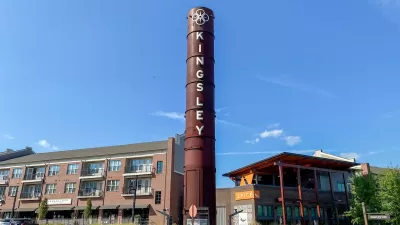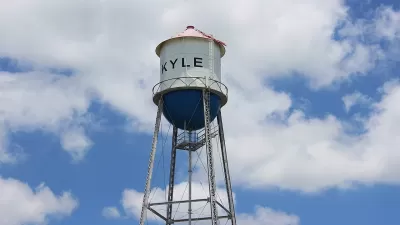A fragmented network of sidewalks is commonplace in the suburbs of Hennepin County, Minnesota. Mary Jane Smetanka reports on controversial efforts to fill in the gaps and retrofit these suburban neighborhoods as walkable places.
In the suburban communities of St. Louis Park, Hopkins, and Edina, a lack of sidewalks leaves residents with few safe solutions for reaching their destinations on foot. Cities like Hopkins historically had sidewalks, but when homeowners were held responsible for their maintenance, many simply removed them, rather than pay for their continual upkeep. In other places, changing policies and piecemeal sidewalk building by individual developments left a fragmented network.
However, as residents demand more opportunities to ditch their cars and connect to their neighbors, these communities are responding with sidewalk-building programs. “[Walkable communities] are a lifestyle asset, and cities are hip to that,” says John Archer, professor at University of Minnesota. “We have to keep attracting people who want to move here, and make this an attractive place, because people who are moving in don’t have the same affections that the old people did.”
Yet, not everyone is on board. “Sidewalks are difficult projects,” Hopkins City Engineer John Bradford said. “Everybody loves the sidewalk — on the other side of the street. That makes for contentious projects.” For long-time residents who’ve managed without a sidewalk for 50 years, the idea of replacing a strip of lawn with concrete is hard to swallow.
St. Louis Park will proceed with its 10-year plan to put a sidewalk within a quarter mile of every resident, although its project list was cut back 20 percent due to objections from residents and physical barriers, notes Smetanka.
FULL STORY: Sidewalks gain in the Twin Cities suburbs, even as some residents protest

Alabama: Trump Terminates Settlements for Black Communities Harmed By Raw Sewage
Trump deemed the landmark civil rights agreement “illegal DEI and environmental justice policy.”

Planetizen Federal Action Tracker
A weekly monitor of how Trump’s orders and actions are impacting planners and planning in America.

The 120 Year Old Tiny Home Villages That Sheltered San Francisco’s Earthquake Refugees
More than a century ago, San Francisco mobilized to house thousands of residents displaced by the 1906 earthquake. Could their strategy offer a model for the present?

In Both Crashes and Crime, Public Transportation is Far Safer than Driving
Contrary to popular assumptions, public transportation has far lower crash and crime rates than automobile travel. For safer communities, improve and encourage transit travel.

Report: Zoning Reforms Should Complement Nashville’s Ambitious Transit Plan
Without reform, restrictive zoning codes will limit the impact of the city’s planned transit expansion and could exclude some of the residents who depend on transit the most.

Judge Orders Release of Frozen IRA, IIJA Funding
The decision is a victory for environmental groups who charged that freezing funds for critical infrastructure and disaster response programs caused “real and irreparable harm” to communities.
Urban Design for Planners 1: Software Tools
This six-course series explores essential urban design concepts using open source software and equips planners with the tools they need to participate fully in the urban design process.
Planning for Universal Design
Learn the tools for implementing Universal Design in planning regulations.
Clanton & Associates, Inc.
Jessamine County Fiscal Court
Institute for Housing and Urban Development Studies (IHS)
City of Grandview
Harvard GSD Executive Education
Toledo-Lucas County Plan Commissions
Salt Lake City
NYU Wagner Graduate School of Public Service





























